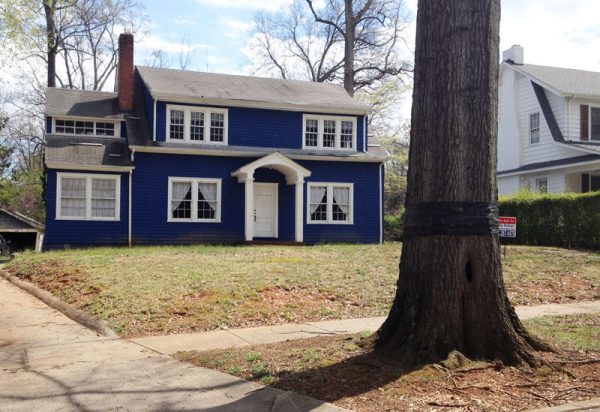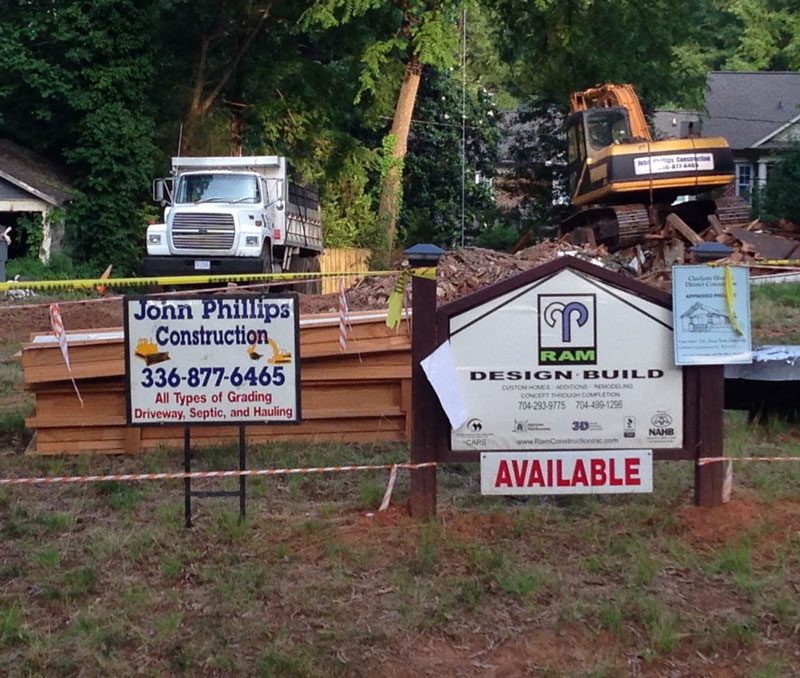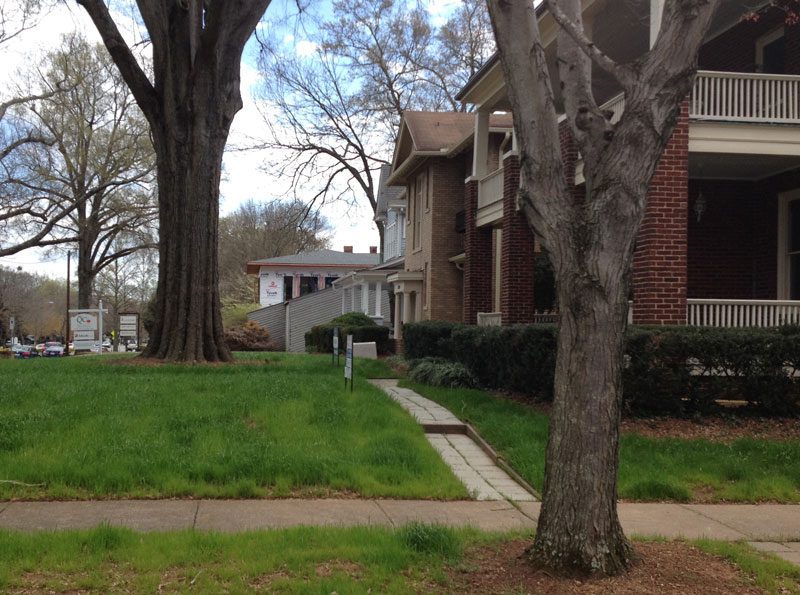Neighbors fear lax oversight imperils Dilworth historic district

With the real estate market on the rebound, construction crews and renovators are hard at work in Charlotte neighborhoods. The city’s six historic districts are no exception. The number of applications for additions or renovations on properties within the historic districts, averaging about 200 a year, has risen every year since 2010. In 2014, says Historic District Commission administrator John Howard, the districts are on pace for a 50 percent increase.
The increased pace worries a group of Dilworth residents, who say construction on a number of homes in their area did not match plans and potentially violated the HDC’s established policy and design guidelines. In one recent project, plans were approved to add a second story to an early 1900s home on Lyndhurst Avenue. Instead, everything was demolished except its wall studs, according to architect and Preserve Historic Dilworth chairman John Phares.
“We call that a virtual demolition,” says Phares.
According to Howard, that Lyndhurst Avenue project did not violate any guidelines, but as a result the HDC is considering how it defines and regulates demolitions.
“Across the county, historic district commissions always struggle with what is a demolition and what is not,” says Howard. “For some, it’s more than half removal. Some may look at square footage.” In Charlotte, there is no definition of a demolition that is specific to historic districts.
The Lyndhurst project isn’t the only one that has neighbors upset. On a recent driving tour of Dilworth, they pointed to what they say are setback violations, inappropriate building materials and described a lawsuit between neighbors about a fence. For example, one building under construction on East Boulevard clearly projected several feet in front of other, older buildings on the same block – which the neighbors say historic district guidelines do not allow.
Howard agreed that some recent projects have violated the HDC guidelines. With that in mind, he has asked the city for $88,000 in the city budget that starts July 1 to hire a full-time planner who would focus on ensuring construction projects in local historic districts match approved plans. (Update: Charlotte City Council on June 9 approved the budget which included HDC’s request for $88,000 to hire the new planner.)
A state law allows cities to create historic districts in order to preserve the historic character of neighborhoods by regulating exterior changes and new construction. In North Carolina, historic district homeowners can get a 30 percent or 20 percent tax credit for renovating historic structures. (Non-income-producing buildings get the 30 percent credit; income-producing properties get 20 percent.) Unless the N.C. General Assembly acts, the tax credit is set to expire in the next state budget, starting July 1. The N.C. departments of Commerce and Cultural Resources have proposed a reduced credit of 15 percent on income-producing structures and 15-20 percent on non-income-producing structures.
Charlotte’s local historic districts – Dilworth, Fourth Ward, Hermitage Court, Plaza Midwood, Wesley Heights and Wilmore – cover about 3,000 properties on about 700 acres. That’s only about one percent of the city’s land area. Historic district zoning can delay a demolition for up to one year and it requires that any exterior changes to existing properties be approved by a 12-member volunteer Historic District Commission. Several Charlotte neighborhoods are National Register historic areas, but that federal designation does not protect properties from demolition or create requirements about changes to buildings.
The process works like this. Owners or architects bring their plans in front of the appointed Historic District Commission for review at a monthly meeting. If the commission approves, the HDC issues a Certificate of Approval for the plan. Property owners are supposed to follow the approved plan during construction/renovation projects.
The problem is, HDC’s two full-time employees and one part-time employee do not enforce violations at the construction stage. That responsibility belongs to zoning specialists in the city’s Code Enforcement Department, who may not be as familiar with HDC guidelines. 
“Right now, we only really go out if someone complains,” says Howard. “People sometimes make changes in the process because they have to. Sometimes they don’t know that they have to inform the commission. Some things are done in error.”
The new planner would visit most new construction and major renovation sites, “especially if the change is street-facing,” says Howard.
Phares said his Dilworth group is also concerned about the number of historic buildings demolished or scheduled to be demolished in recent years, particularly close to South Boulevard, where the light rail line and increasing land prices have encouraged new multifamily projects. A one-year waiting period can be required before a property owner can demolish a historic building – called a contributing structure – within a historic district. The HDC can waive the waiting period, Howard said, but usually does so only if the structure is severely damaged or a safety hazard. Howard said three contributing structures were demolished in 2013. Just last month, owners chose to demolish a 1920s home on Park Road. Phares says four buildings at East Tremont and Euclid Avenue, at the edge of the Dilworth district, are in the waiting phase.
“I see more (demolitions and renovations) in Dilworth because it’s the biggest district,” says Howard. “They get the lion’s share of everything. Everybody is trying to get over there and build.”
The HDC is preparing for a Historic Resources Survey this summer, which will identify and catalog all buildings built before 1964. Phares said his group is worried that the survey might show that Dilworth’s district has shrunk because of the loss of buildings near South Boulevard.
Howard says that’s unlikely.
“Unless there’s like a major loss of structures, like blocks, that’s when districts change,” says Howard. “There’s also a good chance that a district could expand because structures that weren’t considered in the last survey will be in this one.”
Charlotte conducted its last historic resources survey three decades ago, in the early 1980s. Only structures at least 50 years old qualify as “contributing structures” to a historic district. So a large number of buildings built between the early 1930s and 1964 now have a chance to qualify for historic status.
The council is scheduled to vote on the fiscal year 2014-15 budget, including the new planner position, at its Monday meeting. At a straw vote May 28 the council’s two Republicans, Ed Driggs and Kenny Smith, voted against the request for the new position.
